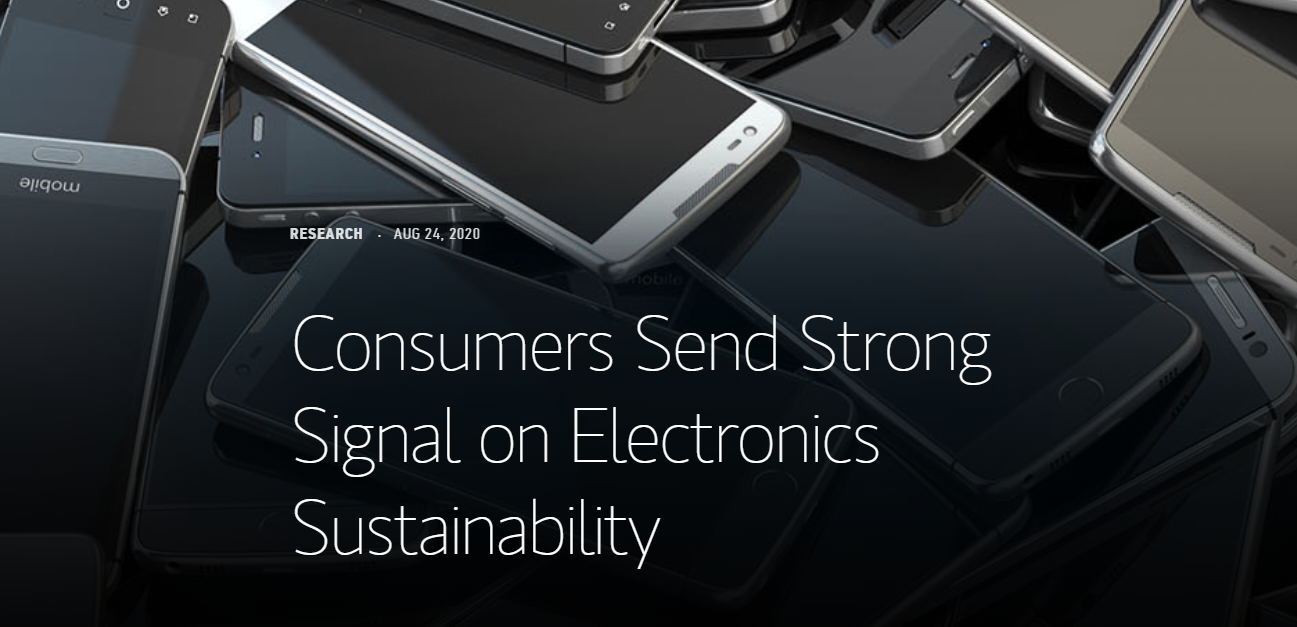Forbrugerne verden over begynder at holde igen på deres fornyelser af elektroniske produkter fra mobiltelefoner til computere, især af miljømæssige grunde. Det begynder producenterne at reagere på, men ifølge Morgan Stanley giver det også et helt nyt investormarked. Flere og flere forbrugere vil forlænge deres produkter, også med reparationer. Investorer skal altså lede efter producenter, som fokuserer på en praktisk omsætning af sustainability-udviklingen. Kinesiske forbrugere er på forkant med den udvikling.
Electronic Sustainability
A growing share of consumers are turning to trade-in programs, recycling and refurbished devices to cut down on e-waste. Manufacturers with trade-in programs may win them over.
For a growing share of environmentally conscious consumers, tossing old phones or computers into the trash is a non-starter. A better option? Trade-in or recycle—or hold out with an aging device.
While e-waste is relatively small in volume terms, accounting for two percent of U.S. landfill waste, it is highly toxic. A February survey from AlphaWise, the proprietary survey and data arm of Morgan Stanley Research, found that consumers in five countries felt growing concern around the dangers of e-waste. With habits shifting as a result, the tech hardware industry will need to adapt to keep customers trading up to newer, more-powerful devices.
The upshot for investors? Manufacturers with established trade-in and recycling programs may be best positioned to capitalize on consumers’ greener habits while cutting down on harmful e-waste.
60% of Consumers Are Already Replacing Electronic Devices Less Frequently

Holding Out on the Heap
Electronic waste, a toxic soup of plastics and metals mingled with lithium, mercury, brominated flame retardants and other hazardous materials, is a mounting crisis. Barring major changes in consumer behavior, e-waste will more than double in annual volume to 120 metric tons by 2050, up from 54 tons today, according to the World Economic Forum.
Morgan Stanley’s AlphaWise survey suggests the tide is turning quickly in favor of sustainability, however, with trade-in programs and recycling on the rise. In just two years, the share of respondents who trade-in or recycle devices has more than doubled to 48% and 54%, respectively.
And in a sign that consumers are aiming to maximize the lifespan of their electronics, nearly 80 percent either have repaired or plan to repair their devices within the next two years.
“Sixty percent of consumers are already replacing devices less frequently,” says Alsford. “Currently an average smartphone is used for two and a half years while a laptop is owned for four.”
Green Attitudes Driving Green Habits
Morgan Stanley Research finds that growing environmentalism is giving way to more sustainable habits globally.
“There’s a strong agreement by the majority of consumers across the U.S., India, China, Germany and the UK that changing habits could save the environment,” says Alsford. “However there are significant differences between countries.”
In China and India, the majority see climate change as a distant problem, while roughly three quarters of the populations of the U.S., Germany and the UK see it as imminent.
China Has the Lowest Percentage of Consumers Replacing Devices Less Frequently But the Highest Number of Consumers Who Plan to Implement

Gaps are less broad across generations, though notable ones exist, particularly with regard to whether concern about climate change is overblown.
In the U.S., 40 percent of Gen X respondents agreed with the statement “the so-called environmental crisis facing humanity has been greatly exaggerated,” compared to just 21 percent from Gen Z. Millennials came in at 34 percent; Boomers 27 percent.
Trade-ins Could be a Win
Device trade-in programs could solve the e-waste crisis while benefiting manufacturers, consumers and the planet.
“Increasing the number of trade-in programs—and incentivizing buyers into using them—makes devices more affordable and also improves the supply for the refurbished device market, where demand is accelerating,” says Katy Huberty, Head of North American Technology Hardware Equity Research for Morgan Stanley.
Trade-ins are also a boon for the environment. “A healthier trade-in and refurbished device market helps extend the life of devices and by extension reduces e-waste,” she says, noting that 40 percent of consumers buy refurbished devices.
To be sure, manufacturers will need to dangle a carrot to spur trade-ins: 79 percent of respondents said they need a monetary incentive to trade in a device. But manufacturers may not need to look beyond consumers’ existing devices for the incentive they need.










